Supervisor or Manager Escalation Process
When a customer asks to speak to a supervisor or manager, it means they are unhappy with something. It could be because their expectations were not met, such as a broken promise or poor quality of a product or service.
There are two scenarios in which customers may want to escalate their call:
Scenario One - Immediate Request for Manager:
In this scenario, the customer asks to speak to a manager as soon as the call begins. They may be impatient and believe that they will receive faster and better service by talking directly to a manager. It could also be a repeat call because the previous contact failed to resolve their issue.
To handle this situation:
- Engage the customer and make them feel heard and understood.
- Assess whether you can resolve the problem yourself or if escalation is necessary. If you can handle it, ask the customer if they would allow you to resolve the issue for them.
- If the customer still insists on speaking to a manager, offer to have the supervisor or manager call them back. This shows that their concern is being taken seriously.
Scenario Two - Request during Conversation:
In this scenario, the customer and the agent are engaged in a conversation, but the customer decides they would prefer to speak to someone more senior. There could be several reasons for this request:
- The customer feels that the agent doesn't understand their problem or isn't listening to them.
- The customer believes the agent lacks knowledge and is incapable of helping.
- The customer feels that no progress is being made, and they want to talk to someone who can take control of the call.
To handle this situation:
- Avoid using phrases like "I cannot fix that" or "I'm not authorized." Instead, show a willingness to help by offering alternative solutions or going the extra mile.
- Try to detect the customer's emotions through their tone of voice and words. Use empathy to address their frustrations and keep the call on track.
- Signpost the next steps of the call to give the customer a sense of progress and control. Keep them informed if there are any delays or information lookup processes.
De-escalation Tips for Angry Customers:
When dealing with angry customers, it's important for agents to maintain a positive mindset and not take the frustration personally. Here are some tips for de-escalating the situation:
- Practice active listening by allowing the customer to express their concerns without interruption.
- Show empathy and understanding to reassure the customer that their issues are acknowledged and will be resolved.
- Use positive vocabulary and avoid negative phrases that may sound offensive or exacerbate the situation.
- Keep the customer informed about the resolution process and provide realistic next steps to focus on finding a solution.
- Continuously update the customer on the status of their issue to manage their expectations and defuse their anger.
By following these tips, agents can effectively handle escalation calls and work towards resolving customer issues in a satisfactory manner.
Summary of Supervisor or Manager Escalation Process

Note: There is no valid reason to decline a supervisor call request considering that the L1 agent tried to de-escalate it.
SME/TL must further assist the customer by making a follow up call based on the agreed schedule.
L1 agents who failed to de-escalate or has multiple opportunities in handling the call (which resulted to a supervisor call escalation) will be given feedback and/or sanction by his/her direct superior.
All transactions must be logged or visible in the appropriate ASK channel. No DM (direct message) will be entertained.
Updated 5 months ago
